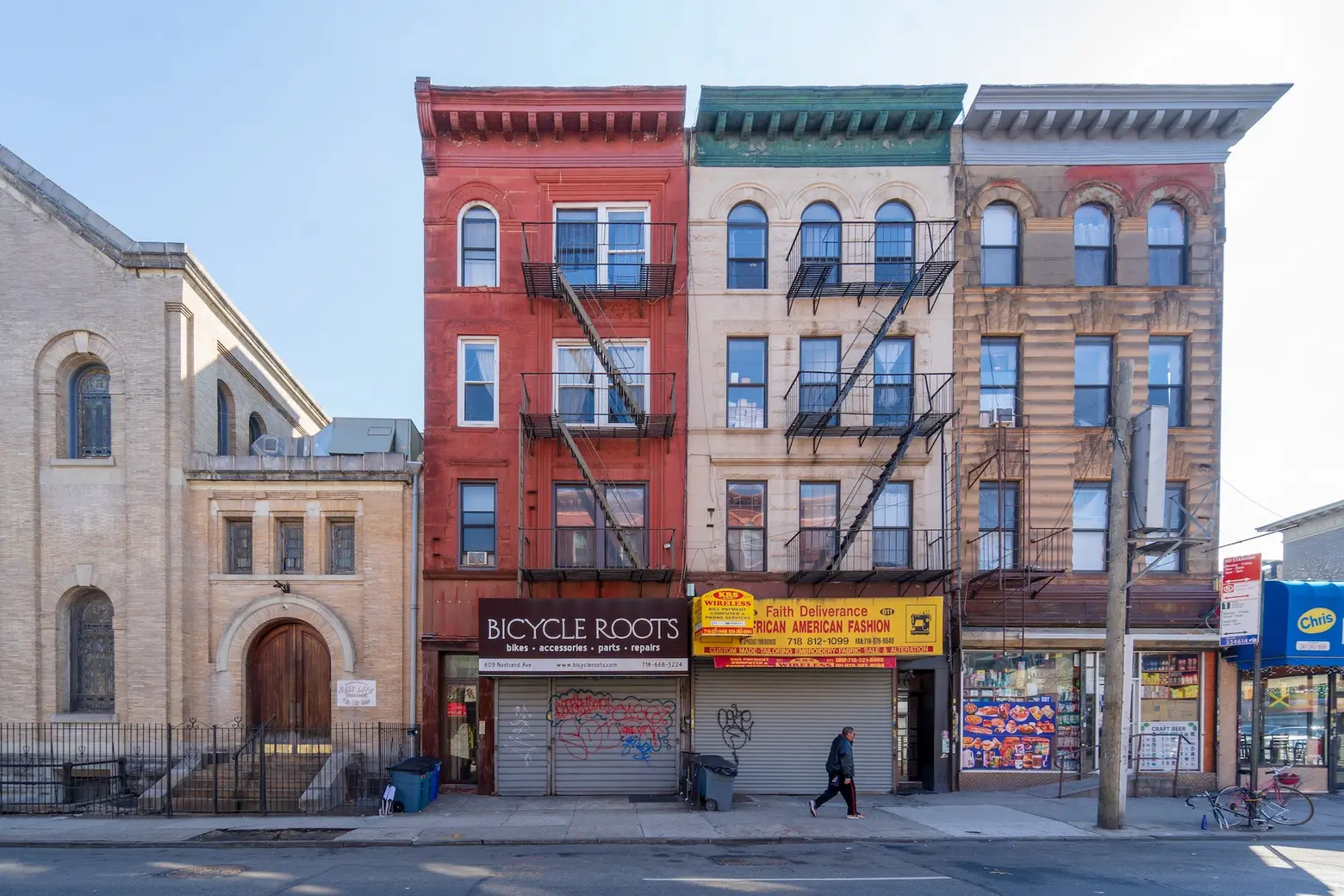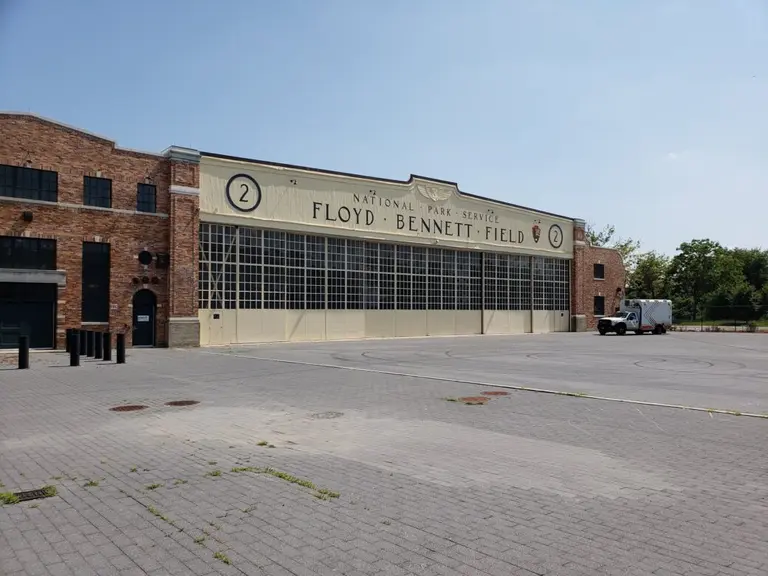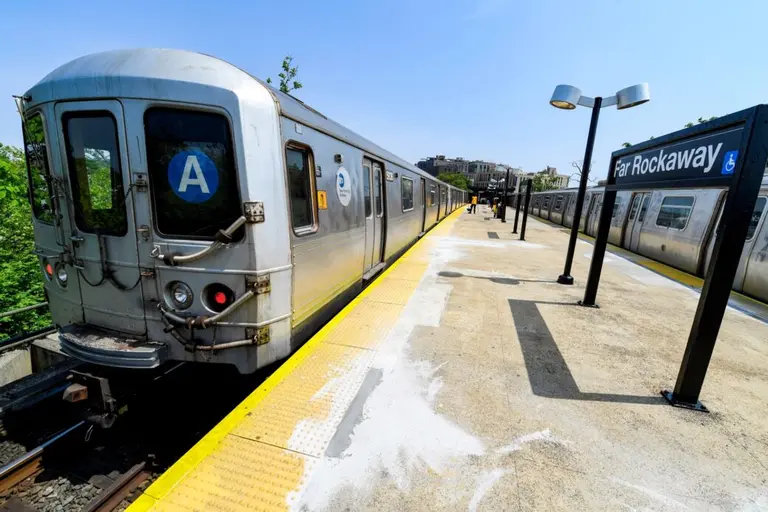NYC lost over 100,000 rent-stabilized units since 2019, according to report

Despite a 2019 state law that largely prohibits landlords from deregulating rent-regulated apartments, the number of rent-stabilized units in New York City has dropped significantly, as first reported by The City. These findings indicate that there are potentially thousands of tenants who are currently paying rent that is more than the previously regulated amounts. These tenants also lack the rights given to New Yorkers living in rent-regulated units, like guaranteed lease renewals and restricted rent hikes.
In 2019, the state legislature passed the Housing Stability and Tenant Protection Act, a comprehensive set of laws that gave new protections to rent-regulated tenants in NY. The act also ended vacancy decontrol, the ability of property owners to deregulate their vacant apartments once rents reached $2,774 per month.
Despite the elimination of vacancy decontrol, the number of apartments registered as rent-stabilized has decreased to 858,000 as of November 2022, down from 974,000 in 2019, according to data from the NY State Division of Housing and Community Renewal (DHCR).
According to landlord groups, the cause of the decrease in rent-stabilized units is part of a “natural lag” seen in registering apartments each year.
“The idea that tens of thousands of apartments have vanished from registration is absurd. This is simply the natural lag that we see in registering apartments each year,” Jay Martin, executive director of the Community Housing Improvement Program, said in a statement in response to The City’s article.
Martin pointed out that roughly 50,000 units that had gone unregistered in 2018 were eventually reported to the DHCR.
To get to the bottom of this pressing issue, The City visited a building in Prospect Heights whose property tax bill shows a total of 16 rent-stabilized apartments in June 2019, 10 in 2020, and then just six each consecutive year after.
The City contacted approximately half of the tenants currently residing at 750 Washington, many of whom had moved into the building within the past year and were unaware that their units were once rent-stabilized. Four of these tenants requested records of their apartment’s rent histories from the DHCR, providing them with a breakdown of every past rent increase, and also showing them when their landlord deregulated their unit after its rent exceeded the $2,774 per month high-rent threshold.
The records showed that all four of the apartments had been in the rent regulation system between 2018 and 2019, before being removed in 2020.
Rent histories for two of the apartments showed a “high rent vacancy” beginning on October 12, 2020, despite the vacancy decontrol being eliminated in June 2019 and both of the units previous rent not exceeding the threshold.
In order to exceed the threshold, the property owners would have had to invest between $30,000 and $40,000 through an Individual Apartment Improvement, and then begin a lease with a new tenant between April and June 2019 before vacancy decontrol was abolished.
According to the previous tenants of these two apartments who moved out in June 2019, their units never had the chance to be renovated nor had they signed a new lease with their landlord.
The City even contacted the apartment’s new residents, who complained about the owner’s handling of renovations and safety issues.
According to the city’s Department of Housing Preservation and Development, 750 Washington currently has 78 unresolved housing violations, including violations for mice and cockroach infections and missing or defective smoke detectors. This number is five times higher than the average rate per apartment in NYC.
These findings are confusing, considering the fact that NYC should have more rent-regulated apartments now than before the law changed in 2019.
Data shows that 31,382 units have been added to the number of rent-stabilized units and 30,788 have been lost since 2019, according to the city’s Rent Guidelines Board. Most of these gains were made through tax break programs.
There are ways in which these apartments can be deregulated legally. One way is when these tax breaks expire, and another is through a process known as “substantial rehabilitation,” which allows property owners to deregulate whole buildings if they can prove it is in a “deteriorated state,” or 75 percent of the building’s systems need repairing.
Tenant advocates have been speaking out against this loophole, with some testifying against it at a state housing agency hearing last month. However, RGB data shows that only 593 apartments have been removed from rent regulation through substantial rehabilitation since 2019.
Tenants have tried to alert the DHCR of rent-stabilized units being illegally removed from the rent-regulation system, but are frequently hindered by information restrictions. For example, only tenants and landlords can receive rent histories and stabilization statuses of apartments, and only on request from the state.
Furthermore, the DHCR currently has 3,428 pending rent overcharge cases on backlog, according to an internal memo obtained by The City. Many of these cases involve alleged instances of illegal deregulation.
This delay means that by the time the cases are seen by the DHCR, many of the tenants who filed them have already moved out of their illegally deregulated apartments, and end up throwing out their cases.
“Because overcharge complaints are taking so long to determine, you are really forcing people to move out and have the overcharge claim determined after you leave,” Alejandro Coriat, a tenant organizer in Upper Manhattan, told the website.
Tenant advocates have also argued that the state is not doing enough to make sure it enforces its own rules on rent regulation, claiming that the state is withholding information required to be made public under the Housing Stability and Tenant Protection Act.
“Landlords commit rent fraud because they have operated with impunity, because they know that nobody in State or City government is watching,” the Crown Heights Tenant Union stated, “and enforcement of the law falls entirely on tenants’ shoulders.”
The DHCR included links to data files in its latest report but didn’t include a link to data that presented the number of rent-stabilized units by building, despite the state regularly providing this information to NYC’s tax collection agency.
“I want the data to be public, but I more so want them to hold landlords accountable and enforce registration requirements,” Lucy Block, a senior research and data associate at the Association for Neighborhood and Housing Development (ANHD) who testified at an HCR hearing last month, told The City.
According to Block, the DHCR’s registration data contains information that will be able to show potential violations of rent regulation law that members of the public can see for themselves.
The easiest way to find out if your apartment is rent-stabilized is through the state’s Housing and Community Renewal online portal, which you can access here.
RELATED:




























